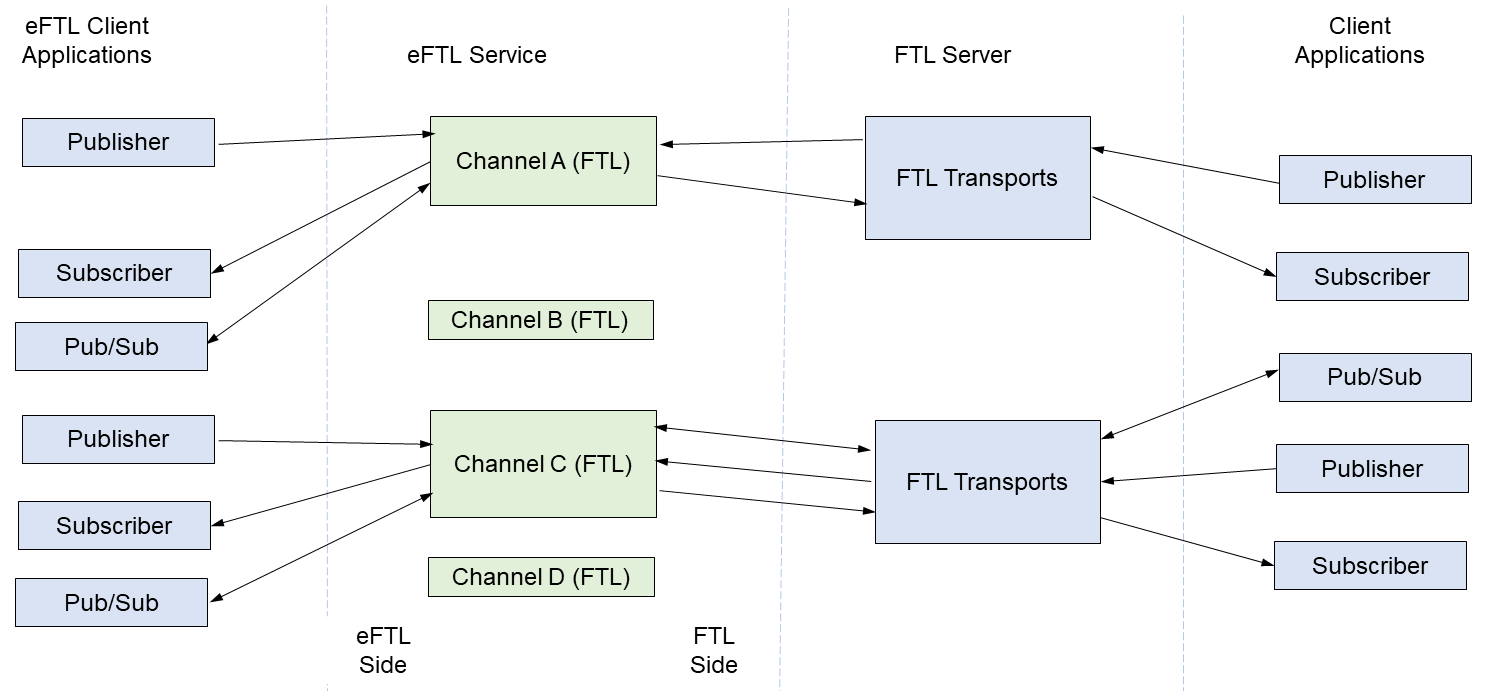FTL Channels
An FTL channel provides publish-subscribe messaging among eFTL applications, and between eFTL applications and FTL applications.
Each FTL channel has an application-facing endpoint, which is its interface to the FTL messaging infrastructure. The channel uses this endpoint to forward messages to and from FTL application processes, including other eFTL services within a cluster.
Administrators can implement each channel’s application-facing endpoint with transports, which tie it to the FTL infrastructure.
In the following example diagram, channels A and F are FTL channels.

Messages from eFTL Publishers
When an eFTL publisher sends a message, the channel forwards it within the eFTL side to all the other eFTL subscribers on an FTL channel. The channel also forwards the message through the FTL Side to become available to FTL subscribers.
Messages from FTL Publishers
When an FTL publisher sends a message, via an FTL transport the message reaches the FTL channel at the FTL side. The channel then forwards the message to all its eFTL subscribers.
However, the channel F does not forward the message to FTL applications; this is managed by the FTL Server.
